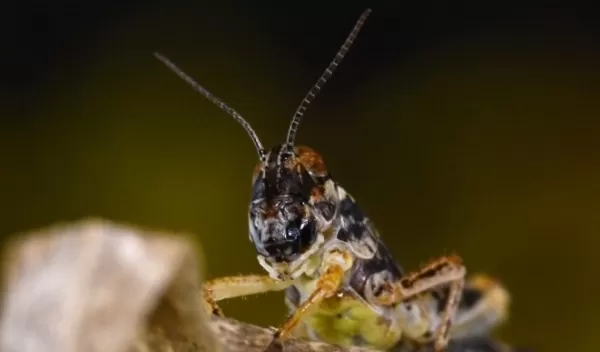
Scientists unlock mysteries of grasshoppers' response to gravity
Despite the importance of insects as agricultural pests, disease vectors, and food web components, the understanding of many aspects of their basic physiology is minimal.
Arizona State University biologist Jon Harrison and Virginia Tech engineer Jake Socha have published the first study that demonstrates how insects adjust their cardiovascular and respiratory activity in response to gravity. The NSF-funded findings appear in Proceedings of the National Academy of Sciences.
The findings suggest that gravity-driven cardiovascular responses may be ancient and widely shared among animals, opening the door for invertebrates as model systems for investigation of cellular and systemic mechanisms of gravity responses.
The research shows that grasshoppers have mechanisms similar to vertebrates to adjust to gravitational effects on their blood.
For example, if you jump out of bed too quickly, you might feel a bit light-headed.
That's because when you're lying down, gravity causes your blood to pool in the lower parts of your body rather than in your brain. Fortunately, when you stand up, within a fraction of a second, your heart begins beating faster, moving the blood to your brain and allowing you to maintain your balance.
The opposite happens when you're standing on your head. Gravity causes the blood to rush to your brain, so your heart beats more slowly and the blood vessels leading to your brain constrict to prevent too much blood from building up there.
But insects don’t have closed circulatory systems with vessels that can restrict fluid flow to certain parts of the body. So how do they control the effects of gravity when they need to climb a tree or hang upside down on a branch waiting for prey?
Grasshoppers can combat the effects of gravity on blood flow when awake but not when anesthetized. Thus, similar to vertebrates, grasshoppers have mechanisms to adjust to gravitational effects on their blood.
Grasshoppers, it turns out, have at least three ways to compensate for gravity: variation in heart rate, breathing rate, and functional valving.
When grasshoppers change their orientation, they respond to gravity just as humans do and show many of the same physiological responses, the researchers found. That shows how similar animals are physiologically, the scientists say, despite how different they may appear.
"Insects are one of the largest and most important groups of organisms on our planet, yet before this research we lacked understanding of a key aspect of their most basic physiology: how respiration and circulation respond to gravity," says Sharon Swartz, a program director in NSF's Division of Integrative Organismal Systems. "These scientists show that very distantly related animals share fundamental similarities in basic responses to the ubiquitous force of gravity."
